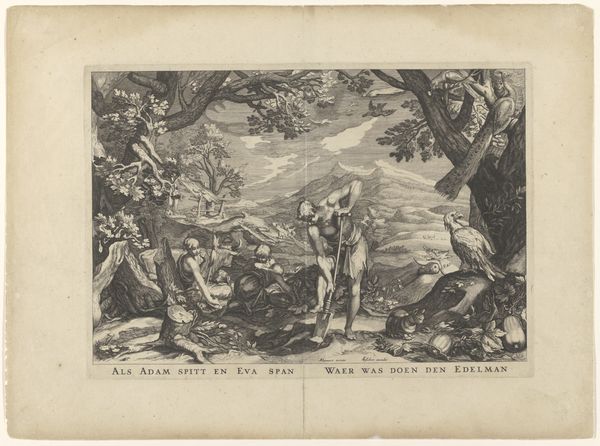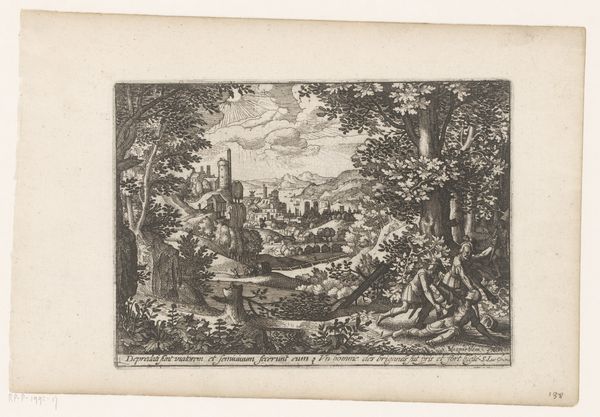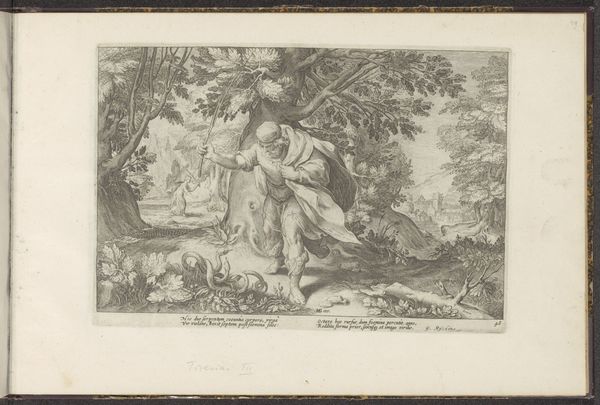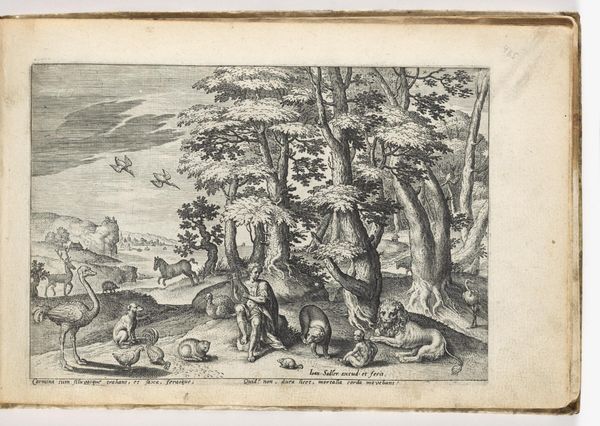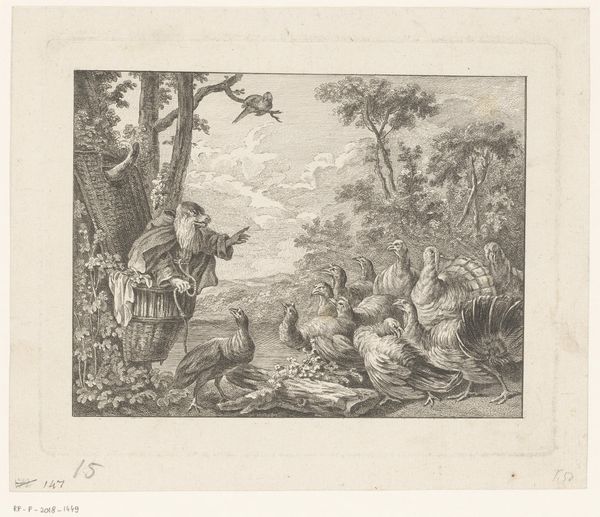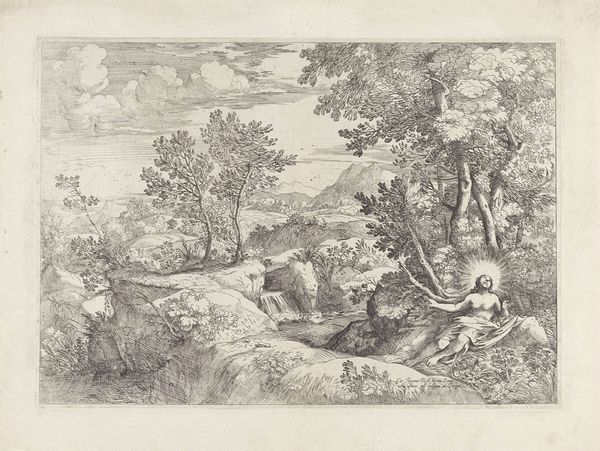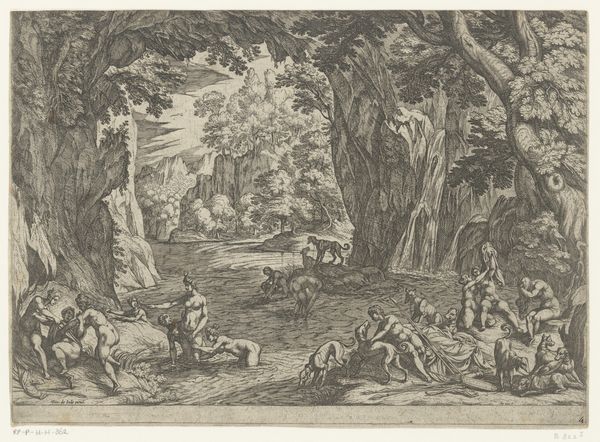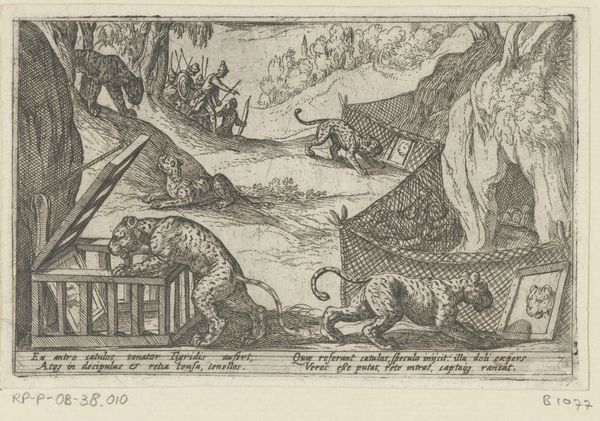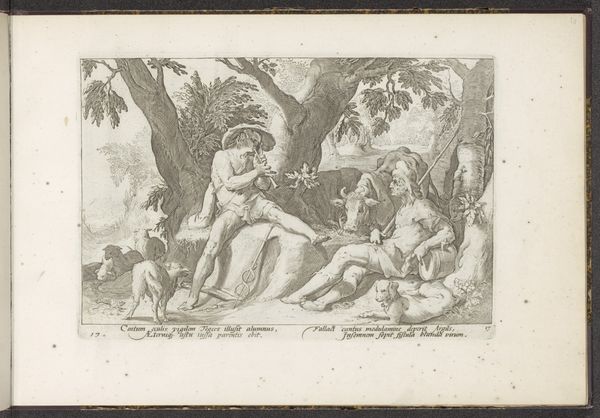
Landschap met het verhaal van de barmhartige Samaritaan: de Samaritaan helpt het slachtoffer op zijn paard 1564 - 1654
0:00
0:00
print, paper, engraving
#
narrative-art
#
baroque
# print
#
landscape
#
paper
#
history-painting
#
engraving
Dimensions: height 139 mm, width 189 mm
Copyright: Rijks Museum: Open Domain
Curator: What a find. This engraving, dating sometime between 1564 and 1654, depicts "Landscape with the Story of the Good Samaritan: The Samaritan helps the victim onto his horse". Editor: It's remarkably detailed, considering it's a print. The contrast between the light and shadow creates a strong sense of depth, pulling you right into that chaotic scene. Curator: Right. Jasper de Isaac really mastered the engraving technique. Look at the precision in those lines; you can almost feel the texture of the paper. These prints circulated widely. Consider how an artwork like this could democratize access to both biblical narratives and detailed landscapes at the time. Editor: Absolutely, these works play an important part in understanding of how the message was received at the time, but it seems such a bizarre composition for what should be a focus on charity. He's placed the main figures quite small within an expansive landscape, drawing as much attention to the scenery as to the act of helping. The detailed townscape in the background with that fantastical cliff really steals focus, I feel. Curator: Well, it's baroque; drama is inherent to the style. But more than just the style itself, prints were commodities to be bought, sold, and traded. Consider the cost of production, the availability of paper, and how images, like this one, perpetuated particular social and religious values within a growing marketplace of visual culture. Editor: A visual culture steeped in religious teachings, yes, and perhaps these prints reinforced those values beyond the direct purview of the church or religious institutions. Imagine this image hanging in someone's home; what conversations might it have sparked? Curator: Exactly, and it goes beyond mere instruction, or sermonizing through image. We're dealing with the cultural currency of the time; images had power in how they could define and circulate shared morals, and social order for everyone. Editor: An intriguing glimpse into the circulation of ideas. It makes me look at how we interact with art and narrative in general. Curator: Precisely! It makes you think, doesn’t it? How this one small piece is tied into networks of economics, labor, material availability, the expansion of knowledge and beliefs. It reveals quite the cultural depth through something so modest.
Comments
No comments
Be the first to comment and join the conversation on the ultimate creative platform.
